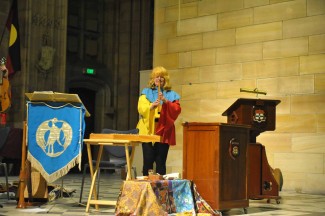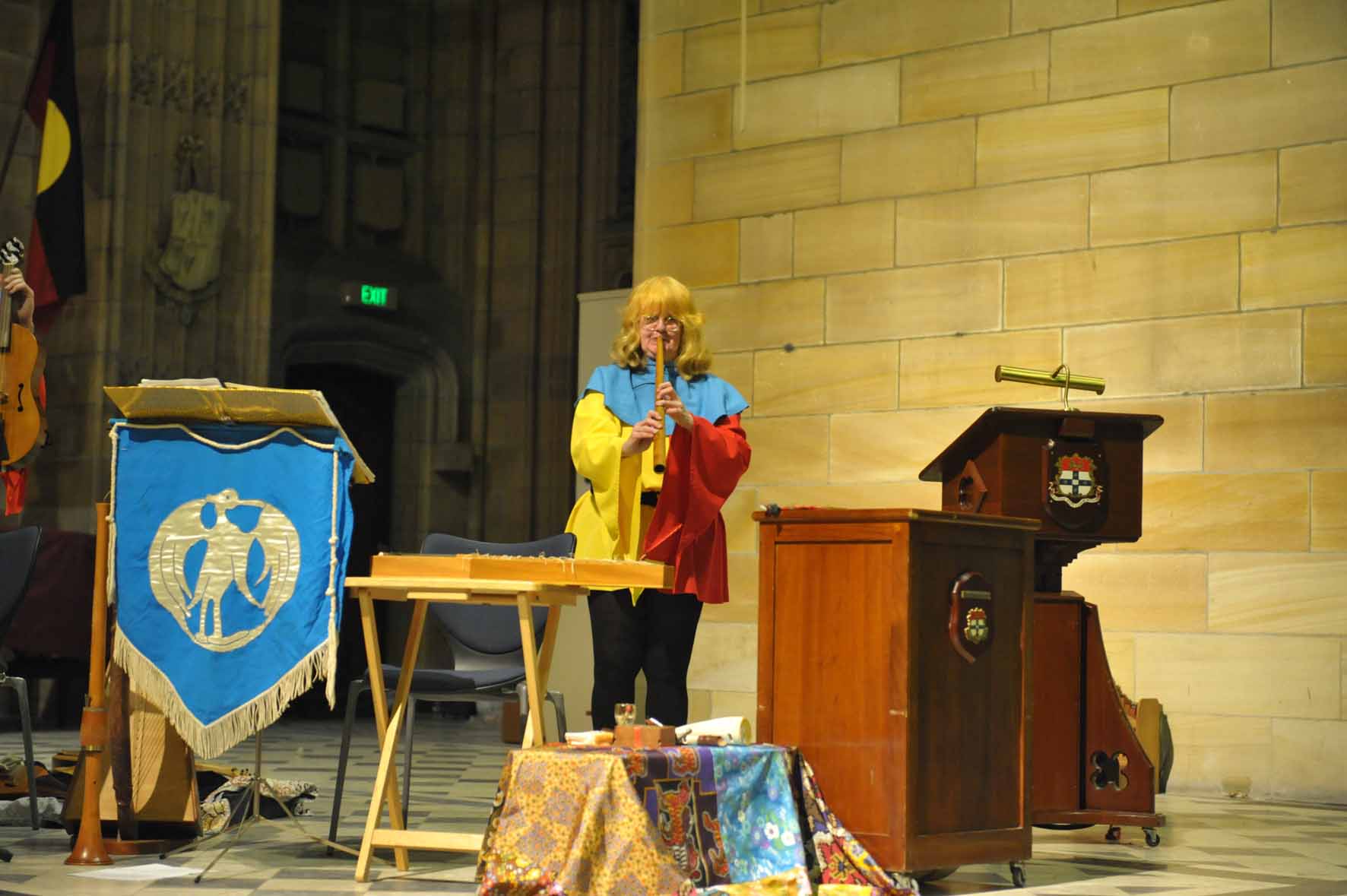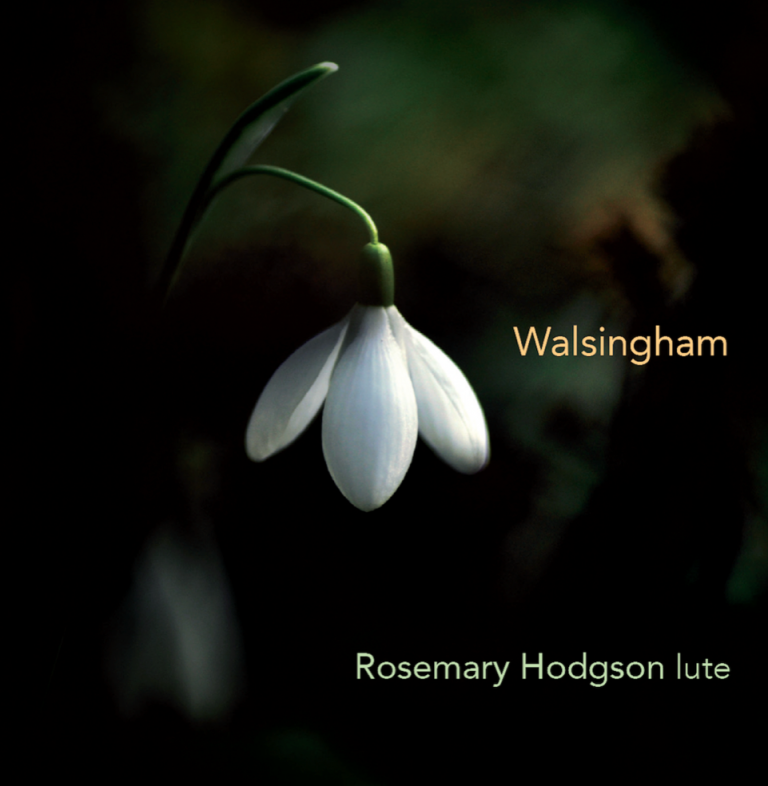The Making Of The Pilgrimage To Montserrat – Winsome Evans Talks

Located about 45 km northwest of Barcelona, the Benedictine monastery of Santa Maria de Montserrat which dates back to at least 1025, rises dizzyingly to the skies, clinging to the jagged face of the eponymous mountain. Riding up the rock to the monastery in the Aeri (cable car), we were transported 1,350-metres, through gradients of up to 45° in minutes. I was intrigued by how the medieval builders of this impressive sanctuary transported their materials and tools up the craggy cliff. Equally intriguing was the matter of what sustained the streams of pilgrims whose journey up the mountain centuries ago, was undoubtedly more arduous and lengthier than mine.
This journey and more specifically, the music they took with them is a concept that has absorbed one of Australia’s expert early music specialists, Winsome Evans BEM, OAM, for the last half decade. The product of this preoccupation is a new double CD, Pilgrimage to Montserrat, released on the Tall Poppies label, on which Evans, a renowned academic, harpsichordist and multi-instrumentalist, composer and arranger, directs her ensemble, The Renaissance Players in a recreation of the songs of these crusaders.
Speaking to SoundsLikeSydney Winsome Evans explains “I’d been recording the Cantigas de Santa Maria for quite a few years and I thought I should try to find some other music from the Iberian peninsula. I was running a series of lectures at Sydney University on Iberian music and it became clear to me that there was a huge collection of music from Santiago de Compostella and also that amazing manuscript Llibre Vermell de Montserrat (The Red Book of Montserrat).”
The Llibre Vermell, a 14th century manuscript records the music of the shrine. It was found in 1806 and is still kept in the monastery archives. Originally containing 172 double pages, some 30+ have been lost. The composers of the songs it contains are unknown. The centrepiece of Pilgrimage to Montserrat is a collection of 10 pilgrim songs from this book – the cants del romeus. Evans had to search deeply for companion pieces. “The only other material I could find” she continues, ” were a handful of songs from courtiers from the various medieval courts; and there were songs by a 13th century poet musician called Martin Codax from the Santiago area. I gave lectures on all these topics and I thought these songs should be performed – it would be a worthy project.”
Search through any early music discography and it becomes evident that many early music groups around the world have perform their version of the 10 pilgrim songs, including Jordi Savall and his ensemble. “Some of the songs would have been well-known – like the monodic Splendens Ceptigera. But the pilgrims came from all over Europe, even from as far as Greece, and from the Christian world to undertake the journey and they entertained one another. There is a very interesting description in the manuscript from Compostella about people from all over the world – Britons Teutons, Francs – they came with their instruments, singing and playing. The CD is an re-imagining of this conglomerate of people coming with their own music and style, all with the sole purpose of getting to the monastery.”
To complement the collection, Evans included a few secular musical choices from Europe. “Some pieces can be organised in a round, so that was another aspect that I kept in mind – the idea of circle dancing where people have to hold hands, and the concept of the magic of a circle which you get in a round.”
Evans is not averse to entertaining the belief that the surviving manuscript of the Llibre Vermell has been touched by the divine. Shortly after its discovery it was removed from the monastery on loan, “hidden by angels” for safekeeping and returned only 78 years later in 1885. Providentially it was not in the monastery when the soldiers of Napoleon destroyed the library. Evans says “It was a miracle it was returned and is now in the restored library as Manuscript No. 1. It’s kept in a glass cabinet and everyday a page is turned.”
Evans herself first encountered a copy of the manuscript in the Department of History at Sydney University. But ancient manuscripts give little indication of style, tempo and other variables. Listening to the performance of this music on the recording, there are numerous stylistic details which must surely be the result of interpretation rather than annotations on the score.
For this, Evans drew on her study of early music which spans nearly 5 decades. She established The Renaissance Players (an ensemble of singers, instrumentalists and actors which she continues to direct) in 1966. It has given her an instinct for this style: “I’ve been working on it for many years – the whole question of how mmedieval music sounded is something that we know very little about, so I’ve been listening to a lot of traditional music from Spanish and Sephardic traditions. The Sephardic tradition is important in any aspect of researching Spanish traditional music because the early Sephardic travelers did maintain their language, their customs and traditions. One of the songs on the CD has an after dance which they quite often made up using the same material – Stella splendens – a Greek dance. It is as if pilgrims from various nationalities had a go at the dance so a lot of it is imaginary and fanciful. Although if I were performing it in 10 years I would do it quite differently. I’m not naive enough to think that interpretation won’t change with more research – so it’s really important also, not to become set in our practices.”
Vital to re-creating the sounds of that time of the period are the instruments used and The Renaissance Players perform on an impressive array of of these. The rebec (a bowed lute from the 10th century), the bombarde (a single keyed oboe from Brittany), the tapan (a double-headed drum of wood, skin and hemp) and the strohfiedel (an early xylophone made of straw and wood) – to name a few.
Evan’s historical sleuthing task faced the added challenge that none of these fragile instruments, made from natural materials, survived their times. “I’ve had to consider three or four decades of searching for instruments that could be considered to be valid in the performance of Medieval and Renaissance music. Quite a few folk instruments from Greece and Spain, France, England and Ireland may be related to what the pilgrims played. None of the early instruments survive so we use reproductions. All the stringed instruments are by Australian makers – I’ve shown them pictures of instruments that I’d like them to have a go at making and they’ve stuck pretty much to what I’ve asked for. I’ve bought some instruments from early music shops and the double reed instruments have come from overseas.”
“There is an instrument called the douçaine (A medieval cylindrical shawm described c.1480 a single surviving example of which was found in Henry VIII’s ship Mary Rose). Linsey Pollack who makes single reed instruments went to Macedonia as a young man, travelled around Bulgaria and Macedonia, learned to play the bagpipes and when he returned, introduced me to Bulgarian and Macedonian music. He started making those instruments and played for a while in The Renaissance Players.He has been making some of the whistles.”
Profound as this project is, there is yet a deeper and more personal layer. Pilgrimage to Montserrat is dedicated to the memory of film maker Robin Anderson who died in 2002. Anderson was an award-winning documentary maker whose credits include Rats in the Ranks, First Contact and Black Harvest. Anderson and her professional partner and husband Bob Connolly, were also responsible for the documentary Facing the Music which exposed the financial constraints of running the University of Sydney’s Department of Music.
Evans recalls her association with the pair. “I got to know Robin Anderson and Bob Connolly very well when they were making the documentary on the music department. They came into the department every single day for a year and the film shows a little bit of The Renaissance Players rehearsing. When she tragically passed away, we played at her funeral and thought we should do a tribute – and my tribute was to put together all the ideas for the Montserrat project and put on a concert in memory of Robin at St Andrew’s Cathedral, which we did in 2002. It seemed to go very well and a lot of people wanted to be in that concert – present and past members of Renaissance Players, a few students who were very very good, and some graduates.”
“Robin had many special qualities” continues Evans. “Her resilience, her cheerfulness and perspicacity…. I don’t think she knew anything about medieval music but she was quite open to sounds and discussions and incredibly intellectual in the nicest possible way. She was interested in everything that was going on the music department.”
Shamistha de Soysa© for SoundsLikeSydney
Click here for information on Gazpacho Andaluz, The Renaissance Players’ upcoming concert in which they will play excerpts from The Pilgrimage to Montserrat.
Click here for more information about The Pilgrimage to Montserrat.




